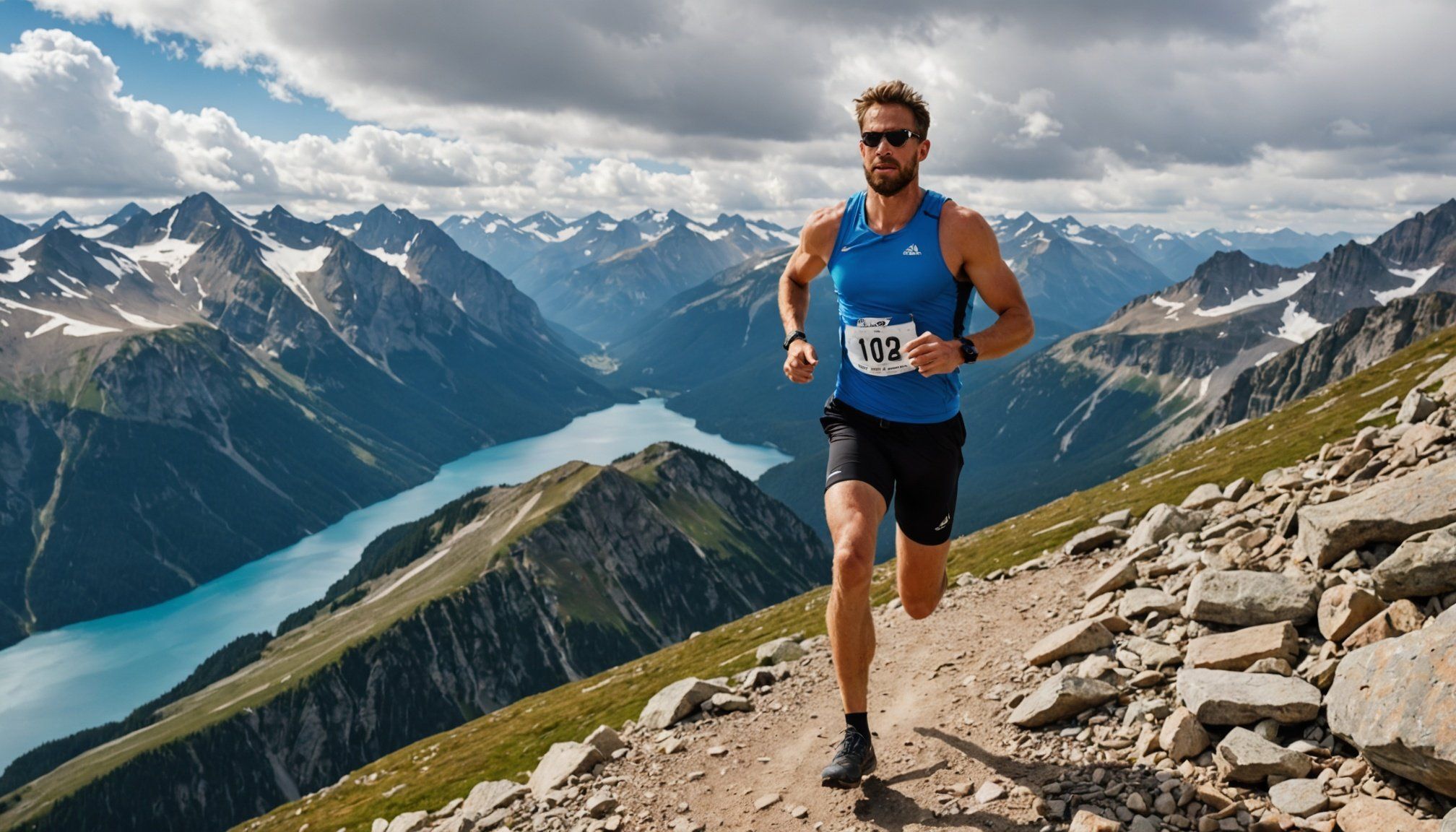Understanding VO2 Max and Its Importance for Mountaineers
Mountaineering is not just about conquering peaks; it’s a test of endurance where VO2 Max plays a pivotal role. VO2 Max, defined as the maximum volume of oxygen an individual can use during intense exercise, is a critical measure for top-performing endurance athletes, including mountaineers. Achieving a high VO2 Max enhances overall mountaineering performance, as it allows climbers to sustain intense activity for prolonged periods.
Altitude training is one method to elevate VO2 Max, but how is this enigmatic metric measured? Typically, it involves a graded exercise test on a treadmill or cycle ergometer, monitored for oxygen and CO2 levels. The higher the VO2 Max, the more efficiently an athlete’s body can uptake and utilize oxygen, providing a significant advantage in high-altitude conditions.
Also read : Conquering failure: how sports psychologists empower athletes to overcome fear and achieve success
Importantly, VO2 Max levels can vary significantly with altitude. At higher altitudes, decreased atmospheric oxygen can reduce VO2 Max, demanding even greater efficiency from the body. Therefore, elite mountaineers often train under simulated high-altitude conditions to enhance their physiological capacity and resilience. Understanding and improving VO2 Max through specialized training can profoundly impact a mountaineer’s performance and success in challenging environments.
The Science Behind Altitude Training
Altitude training stands as a cornerstone for enhancing endurance, particularly through its unique physiological adaptations. When athletes train at high altitudes, they expose themselves to hypoxia, or reduced oxygen availability, which triggers the body to adapt. This adaptation includes increased red blood cell production, which proponents argue can significantly boost VO2 Max performance, offering a considerable edge during the demanding conditions of mountaineering.
Topic to read : Maximizing athletic performance: how genetic profiling revolutionizes customized training for elite athletes
Several scientific studies underscore the benefits of altitude training. For instance, it has been observed that sustained exposure to hypoxic conditions can augment the body’s efficiency in oxygen utilization. This means athletes can perform longer and harder, as their bodies become adept at working with the limited oxygen available. Moreover, innovations like simulated high-altitude environments offer mountaineers opportunities to train effectively without leaving sea level.
Performance enhancement through altitude training is not just theoretical—it’s validated through a body of scientific work. Evidence indicates marked improvement in endurance and overall mountaineering performance post-altitude training, particularly when managed by a structured program. With ongoing research, further insights into this phenomenon promise to refine training regimens, maximizing the potential of elite athletes in their high-altitude pursuits.
Training Regimens for Elite Mountaineers
Elite mountaineers know that reaching peak performance demands specialized training regimens. The key lies in personalised training strategies that focus on altitude acclimatization. This allows climbers to adapt effectively to the challenges posed by high altitudes.
Structured Training Plans
A structured plan is essential for preparing the body for high-altitude environments. Such plans should include tailored workouts that simulate altitude conditions, enabling physiological adaptations similar to those experienced at elevation.
Acclimatization Techniques
Progressive acclimatization strategies are crucial. Gradual exposure to higher altitudes encourages the body to adjust and thrive. Techniques such as “live high, train low” maximise the benefits of natural altitude exposure.
Strength and Conditioning Components
Strength and conditioning are indispensable to enhance overall VO2 Max and endurance. By incorporating cross-training, mountaineers can boost muscle endurance and cardiovascular health, which are vital for efficient oxygen usage. Incorporating exercises such as resistance training and core workouts can significantly improve an athlete’s ability to perform at maximum intensity while mitigating injury risk.
Tailoring these elements to individual needs ensures that training regimens prepare mountaineers for the rigorous demands of high-altitude expeditions, enhancing their performance and success.
Testimonials and Case Studies of Elite Mountaineers
Mountaineers at the peak of their fields often share compelling personal experiences showcasing the transformative effects of altitude training. These stories offer invaluable insights into the real-world benefits of such rigorous preparations. Take, for instance, the account of Helen Armstrong, a renowned climber, who credits her VO2 Max improvement to structured altitude training. Her enhanced performance was noted in her increased stamina during high-altitude ascents.
Case studies also serve as robust evidence of altitude training’s impact. Notably, John Spencer, another elite mountaineer, participated in an extensive training regime under hypoxic conditions. This scientifically-backed approach saw measurable improvements in his altitude acclimatization and overall endurance.
Comparative analyses provide quantifiable proof of progress. By examining pre- and post-training data, mountaineers like Armstrong and Spencer showed remarkable gains in mountaineering performance. Their heart rates and oxygen consumption efficiencies in low-oxygen environments significantly improved, leading to better performance during actual climbing expeditions.
These personal and documented accounts underscore the undeniable benefits of targeted training protocols, offering aspiring mountaineers a roadmap to breaking their personal boundaries through focused altitude training experiences.
Expert Insights and Best Practices
For elite mountaineers, the right guidance can make all the difference. Expert opinions reveal that successful altitude training hinges on integrating scientific principles with practical application. Leading coaches emphasize the balance of intensity and recovery to maximize VO2 Max. This is particularly crucial in avoiding overtraining while optimizing performance.
Advice from Altitude Training Coaches
Experts advise a gradual approach, allowing the body to acclimate effectively without jeopardizing health. Coaches recommend a combination of altitude training and sea-level workouts to maintain fitness while reducing acclimation times. This dual approach helps mountaineers build physiological adaptations necessary for high-altitude efficiency.
Safety Considerations During Altitude Training
Preventing altitude sickness is paramount. Experts suggest staying hydrated, maintaining a balanced diet, and incorporating rest days into training regimens. Monitoring vital signs and recognizing symptoms early can prevent severe complications, ensuring safety and progress in training endeavors.
These practical tips are crucial for those seeking not only performance maximization but also a safe climb. Integrating these insights into your preparation strategy enhances both safety and effectiveness, helping achieve peak potential in demanding mountaineering environments.
Future Directions in Altitude Training Research
Ongoing research in altitude training is shaping the future of endurance sports, offering novel approaches to enhance training outcomes. Current trends focus on innovative strategies that blend technology with physiological insights to push the boundaries of mountaineering performance.
Emerging technologies, such as wearable hypoxia sensors and real-time monitoring systems, enable precise physiological adaptations tracking, providing valuable data to optimize training regimens. Furthermore, advancements in simulation chambers, mirroring high-altitude conditions, allow athletes to undergo intense altitude preparation without the necessity of relocating.
A key challenge remains in individualizing training protocols, as athletes exhibit varied responses to altitude. Precision in VO2 Max enhancement strategies is paramount. Scientists are exploring genetic markers that may predict an individual’s adaptability to altitude, offering a personalized training blueprint.
Future studies are poised to unlock new dimensions in altitude training, catalysing breakthroughs in sports science. These advancements promise to refine elite mountaineering techniques, enhancing both safety and effectiveness. As research progresses, the potential to customize altitude training to individual needs holds great promise for those aiming for excellence in extreme environments.





